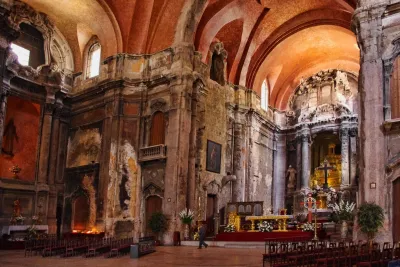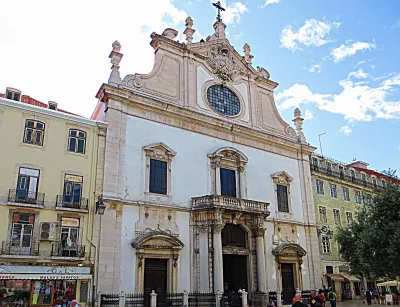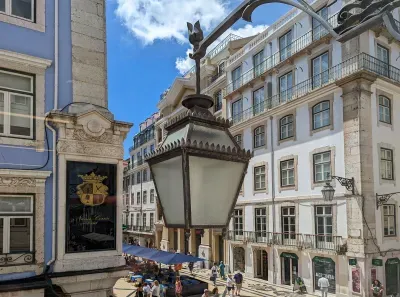
Igreja de São Domingos, Lisbon Jacek Plewa CC BY-SA
Igreja de São Domingos Mister No CC BY-SALisbon’s Igreja de São Domingos church, in the Baixa district, has played a key role in many of the city’s tumultuous historical events. It has seen earthquakes, fires, pogroms as well as royal weddings and other historic ceremonies. Today there is a palpable sense of history, and as well as having a vibrant congregation. This place draws in tourists who come here to escape the hustle and bustle of city life, and soak in the sombre atmosphere of this unique, if slightly eerie place of worship.
The original church was consecrated in 1241 and was one of the largest and most important churches in Lisbon at the time, witnessing state funerals, royal weddings and christenings over the years.
The Largo de São Domingos square, immediately outside the church, features a Star of David memorial plaque dedicated to those who lost their lives in a dark period of the city’s history. In 1497, Lisbon’s Jewish population had been forcibly converted to Catholicism. In 1506, following a period of plague, drought and famine, a massacre of those accused of still being Jewish started in this very church. It took three days for the king’s troops to suppress the bloodshed. Those who had incited the pogrom were put to death, but by then it is estimated that between 1,000 and 4,000 victims had lost their lives to the bloodthirsty mob.
In 1531 the church was damaged by an earthquake. It was then almost completely destroyed by the Great Earthquake which devastated the city in 1755. Only the altar and sacristy of this once majestic church remained. It took 52 years to restore the building to its former glory. Then in 1959 disaster struck again. A fire which blazed for six hours gutted the church, claiming the lives of two firefighters. Many valuable works of art were lost in the blaze. The church was patched up, but did not re-open until 1994. The decision had been taken to leave much of the fire-damaged stonework and sculptures in their charred, crumbling state.
Today the church has a sombre, almost macabre atmosphere. The battered pillars, decaying statues and musty smell, convey an almost eerie sense of past events, and contrast sharply with the brightly painted terracotta-coloured ceiling. It’s worth taking some time to take a look inside and maybe sit for a few moments here to contemplate all that this place has witnessed.
Address
Largo São DomingosBaixa ChiadoLisbon1150-320Phone
+351 21 342 8275Attraction type

Baixa Chiado travel guide »
Baixa, literally translated as 'low', is situated in the gulf between the two main hills of the city and is the central business and shopping district of the capital. The 1755 earthquake and subsequent rebuilding by the then Prime Minister the Marques de Pombal are responsible for the orderly layout of this area, known formally as the Baixa Pombalina. Here a grid of straight streets lined with…